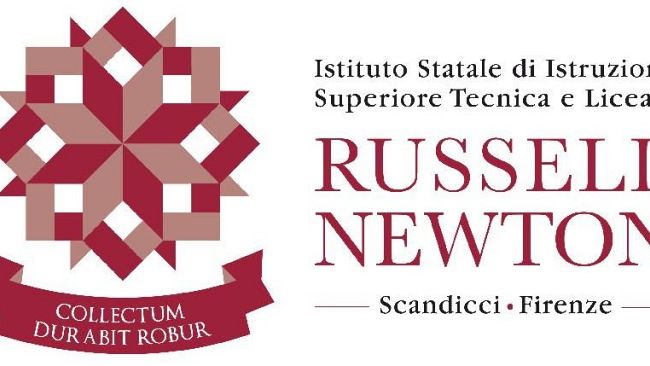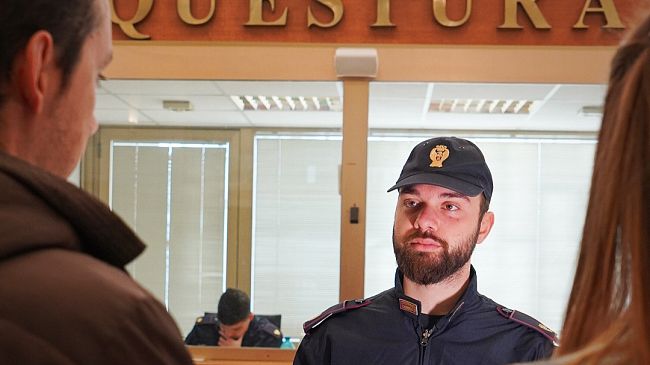IL BADGE STUDENTESCO A SCUOLA
di Mattia Giordano, Marco Severino, Leonardo Masi, Edoardo Michelucci e Niccolò Manfredini (4F Linguistico ISISTL Russell-Newton Scandicci)
All'istituto Russell-Newton di Scandicci, dal 5 dicembre scorso, è stato introdotto uno strumento per rilevare le presenze, le assenze e i ritardi di ciascuno studente: i "badge", ovvero dei tesserini da timbrare all'ingresso in apposite schermate, chiamate "totem".
Questa pratica, novità nella vita studentesca del Russell Newton, è già attiva, ormai da qualche tempo, in diversi istituti della zona metropolitana di Firenze.
Qui i badge sono stati adottati dall’istituto superiore “Giovanni da Castiglione” di Firenze e dall’IIS Calamandrei di Sesto, oltre che da altre scuole italiane, come dall’istituto “Vittorio Alfieri” di Torino, comprendente l’omonimo liceo classico, e dal liceo artistico “Benedetto Alfieri” di Asti.
La decisione del Russell Newton di entrare a far parte di questa schiera di scuole volte alla modernizzazione tecnologica “via tessera”, è fondata su una precisa convinzione per cui, attraverso il badge, sia possibile ottenere una migliore organizzazione all’interno dell’istituto, favorendo anche una maggiore sicurezza per gli studenti.
La reazione degli studenti, seppur molti fossero contrari, è stata piuttosto fredda. La "battaglia" per eliminarlo non è stata neppure "combattuta", e alla fine sono oltre due mesi che l'inizio della giornata scolastica è segnata da questa attività, cioè dal passare il badge sui totem.
Un ragazzo della 4BL, intervistato, dice riguardo a ciò: “Penso che il badge cambi poco l’entrata a scuola, che già prima funzionava, ma non crea neanche grossi intralci. Le uniche pecche sono l’assembramento di persone che si forma per convalidarlo e il fatto che, dalle 8:00, sul registro elettronico segni già ‘ritardo breve’”.
Un altro ragazzo del terzo anno dice: “...Credo che la tecnologia dovrebbe aiutare, non intralciare, e in questo caso a mio avviso ostacola…I soldi che sono stati spesi per i badge e i totem potevano essere utilizzati per la ristrutturazione della scuola, ad oggi in alcune parti carente di manutenzione…Poi, nell’appello a voce fatto dal docente in classe, c’era un modo di rapportarsi tra studenti e docente più ‘umano’, ora il badge rende questo rapporto ancora più ‘freddo’”.
Probabilmente, a causa di un'occupazione finita male l'anno precedente, si è scelto di lasciar correre, ma i contro, se confrontati ai pro di questi badge, ci appaiono tanti. Innanzitutto va considerata la “perdita” dal punto di vista economico, visto che le spese per le schermate elettroniche e i tesserini non saranno state indifferenti… L'assenza di "pro" è poi da sola un "contro". I badge non evitano l'appello a inizio lezione e chi entra alle 8:00, come rilevava prima uno studente, ha già la dicitura di "ritardo breve" comparsa sul registro, anche se per fortuna i professori sono abbastanza flessibili su questo punto di vista e tendono a segnare “presente" chi è arrivato rasentando il suono della campanella.
Gli studenti poi devono portare la tessera con loro ogni giorno, e questo li carica di un'ulteriore responsabilità, essendo essa anche un documento d'identità ufficiale, e se si perde, come accaduto ad alcuni studenti, in tramvia o correndo per arrivare in tempo a scuola, i tempi necessari perché la segreteria fornisca un nuovo badge sono lunghissimi. Crediamo poi che nessuno sia davvero in grado di controllare che il proprietario del tesserino sia poi quello che effettivamente lo utilizza, dato che si potrebbe anche dare a un compagno per farlo passare sul totem al proprio posto.
I badge sono ancora in fase di sperimentazione, ma francamente speriamo che vengano eliminati il prima possibile. Nel caso comunque che ciò non avvenga, ci vorremmo fare promotori di alcuni cambiamenti, come l’aggiunta di altri totem, visto che quelli presenti nei corridoi sono pochi rispetto a quanti studenti frequentano il nostro istituto, e una manutenzione costante, visto che ultimamente un totem non ha funzionato, creando notevoli disagi e esagerati assembramenti all’entrata.
THE BADGE
In the institute Russell-Newton of Scandicci, since the 5th of December of last year, a new tool to register the presence, absence and delays of each student has been introduced: the “badge”, which are little cards that students have to pass onto suitable screens called: totems.
This practice, new in the student life of the Russel-Newton, has already been in use, since some time, in different schools in the metropolitan area of Florence.
Here badges have been used by “Giovanni da Castiglione” high-school in Florence, and by the “IIS Calamandrei di Sesto” high-school, as well as other Italian institutes, such as the “Vittorio Alfieri” institute in Turin, that includes the homonymous classical high-school, and by the “Benedetto Alfieri” art high-school in Asti.
The decision of the Russell-Newton to join this group of schools aimed at the technological modernization “via card” is based on a strong belief that, through the use of the badge, a better organization in our institute can be gained, also granting a better security for the students.
The reaction of the students, even though a lot of them were against, has been quite cold. The “battle” to get rid of this card has not even been “fought” , and now it has been more than two months that the beginning of our school day is characterized by this activity, badging.
A guy from the class 4BL, interviewed, says regarding this:”I think that the badge doesn’t really change the entrance to school, that worked just fine, all that much but at the same time it doesn’t really create any big issues. The only flaws are the crowd of people that happens to pass the badge and the fact that, since 8:00, it automatically registers on the electric register the indication: ‘little delay’”.
Another student of the third year says:”…I believe that technology should help, not get in the way, and in this case, to my mind, it does get it the way…The money that has been used for the badges and the totems, could’ve been used for the renovation of the school, in some parts lacking of maintenance…Also, when it was the teacher taking list, there was a more “humane” relationship between student and teacher, now, due the badge, it’s turned into something colder.”
Probably, due to an occupation that ended badly the previous year, it was decided to let it go, but the cons, if compared to the pros of these badges, appear to be many.
First of all, the "loss" from an economic point of view must be considered, given that the expenses for electronic screens and badges will not have been indifferent ... The absence of "pros" is then in itself a "cons".
The badges do not prevent roll-call at the beginning of class and those who enter at 8:00, as a student pointed out earlier, already have the wording "short delay" appearing on the register, even if luckily the teachers are quite flexible on this point of sight and tend to mark those who have arrived as "present" bordering on the sound of the bell. The students also have to carry the card to school, which adds to them another responsibility, as it is also an official identity document, and if it gets lost, as happened to some students, in the tram or when running to get to time at school, the time required for the secretariat to provide a new badge is very long.
We also believe that no one is really able to check that the owner of the card is the one who actually uses it, given that it could also be given to a classmate to pass it on the totem for him.
The badges are still in an experimental phase, but frankly we hope that they will be eliminated as soon as possible. However, if this does not happen, we would like to promote some changes, such as the addition of other totems, since those in the corridors are few compared to how many students attend our institution, and constant maintenance, since lately a totem has not worked, creating considerable inconveniences and exaggerated assemblies at the entrance.




